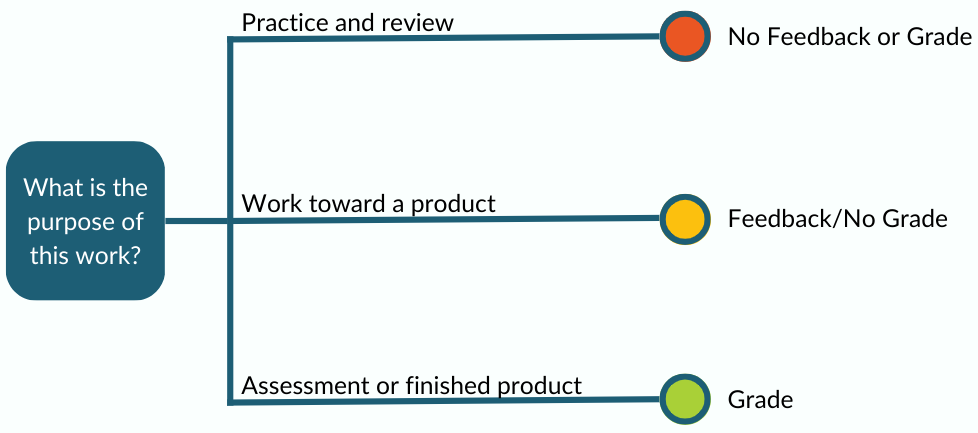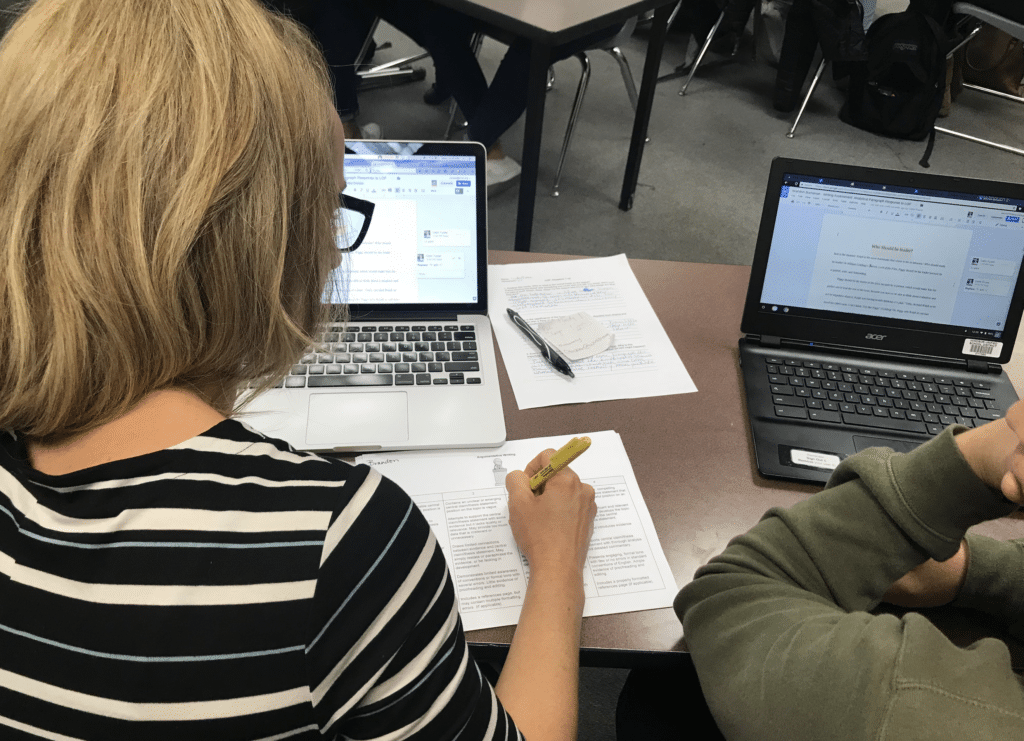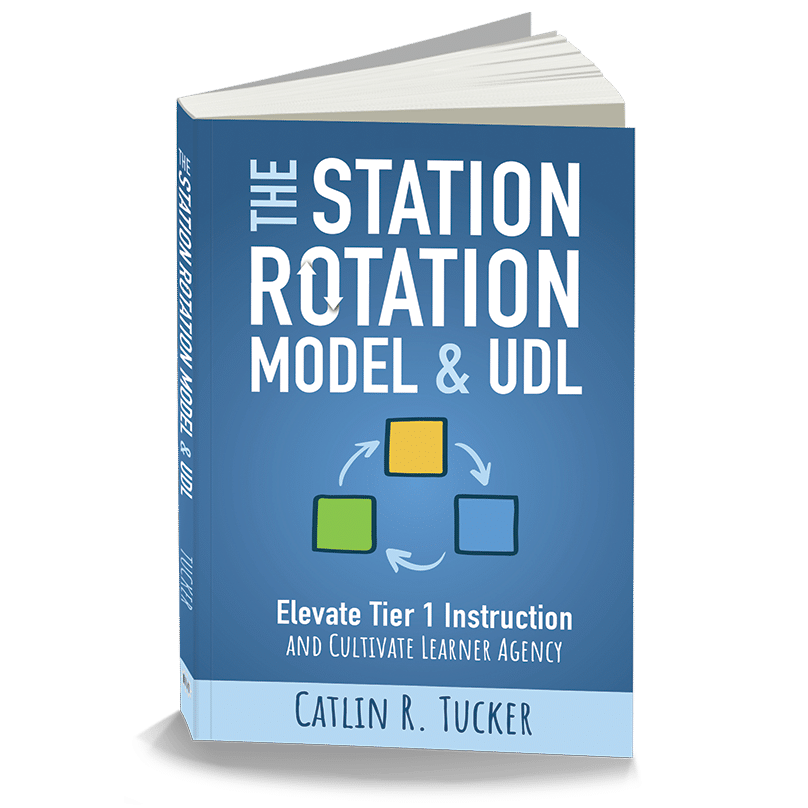How does a teacher’s relationship with their students impact their energy levels or exhaustion? How can a teacher build strong relationships with their students to make this work more enjoyable and rewarding?
When I began my research study on teacher engagement in blended learning environments, I was drawn to Klassen, Yerdelen, and Durksen’s (2013) definition of teacher engagement because it included a social dimension. Unlike prior research on work engagement, the inclusion of social engagement with students and colleagues in the multidimensional construct of teacher engagement acknowledges the unique nature of the teaching profession. This work is grounded on human relationships, which have the power to make this work rewarding and energizing or frustrating and draining.
My research revealed that the biggest factor positively influencing a teacher’s relationships with students in a blended learning environment was their one-on-one interactions. When teachers design learning experiences using the different blended learning models (e.g., station rotation or playlist), they create more time and space to sit with learners to understand their needs and provide personalized support.
Unfortunately, there is no time to connect with individual learners and respond to their specific needs in a traditional classroom that relies heavily (or exclusively) on the whole group, teacher-led model. By contrast, teachers using blended learning models can free themselves to work directly with individual students. In fact, I would love to see teachers using this time in the classroom to rethink their current approach to tasks like giving feedback, grading student work, and providing updates about student progress. Teachers take the bulk of that work home to complete in isolation outside of school hours, but they present a powerful opportunity. Instead of doing these activities alone at home, teachers can pull them into the classroom and complete these tasks with learners.
Below are three suggestions for turning traditional teacher tasks into opportunities to develop and maintain our relationships with learners.
#1 Real-time Feedback Using the Station Rotation Model
Use the station rotation model to give students feedback on work-in-progress (e.g., formal writing, project, performance task). Instead of taking student work home to give them feedback, dedicate your teacher-led station to giving focused and actionable feedback. The time in a teacher-led station is limited, so teachers must explicitly identify the aspect of student work they are providing feedback on in that session. The goal is to keep feedback focused and actionable, so students can take the comment, suggestion, or strategy and use it to improve their work.
Feedback is how students feel seen and supported. The more time teachers dedicate to giving students personalized feedback as they work, the more likely students feel confident navigating tasks or asking questions. Teachers who dedicate time to regular feedback sessions are also more likely to understand where individual students are in terms of mastering specific concepts and skills. This complete picture of where students are in their learning journeys makes it easier to design learning experiences to help all students progress toward learning objectives.
#2 Side-by-side Assessments Using Choice Boards or Playlists
Grading may be the single most draining aspect of this work. First, teachers tend to grade everything students touch to entice them to complete the assignments. This creates unending piles of grading that follow teachers home. Second, grades happen to students. They often do not understand why they are receiving particular grades. There is a degree of opacity around grades and grading practices that can leave students feeling powerless.
Instead of taking assessments home to grade, I encourage teachers to conduct side-by-side assessments. To shift grading into the classroom, teachers need to be more selective about what they grade. I use the flowchart below when working with teachers to help them think about where to invest their finite time and energy to get the best results. I also talked about this approach in a recent mini-episode of my podcast.
Unlike traditional grading practices, which can erode trust and respect, side-by-side assessments turn grading into a conversation between teacher and learner. Teachers meet individually with each student and conduct a think-aloud, making their thinking explicit for learners. I encourage teachers to use a standards-aligned rubric and fill that out as they talk through the student work. That way, the students understand why they are receiving specific scores. This approach to grading large-scale assignments gives students the space to ask questions or request support. This practice demystifies the grading process and creates more clarity for students about what they need to do to continue making progress.
Teachers can create time for these one-on-one grading sessions with a choice board, where students select several learning activities from the board to complete independently. Alternatively, teachers can design a playlist with a sequence of learning activities for students to self-pace through. (To learn more about the difference between a choice board and a playlist, check out this post.)
#3 Conferencing
A regular conferencing routine is a critical component of blended learning. Teachers must have time to meet with learners in each learning cycle or unit to discuss their progress. I developed the 4Ps conferencing framework to prioritize student agency in the conferencing process, allowing learners to make key decisions about how the time is used. Regardless of the structure conferences take, the time together communicates that the teacher cares about the student and wants to support them.
These strategies are designed to create more time and space for connection around everyday tasks. We do not want to add to our teachers’ already overflowing plates. Relationship building should not be seen as separate or “in addition to” our current workload. Instead, teachers can nurture their relationships with students every day by engaging them in conversations directly related to their learning experiences. If teachers use feedback, grading, and conferencing as opportunities to connect with learners, they can build stronger relationships with students while also feeling more effective and efficient.
School leaders interested in supporting their teachers in learning how to design and facilitate blended learning experiences to work with individuals or small groups of students can request a quote for bulk licenses of my self-paced online courses, Getting Started with Blended and Online Learning and Advancing with Blended and Online Learning! Teachers with access to my online courses enjoy video instruction, lesson planning templates, and resources designed to support them as they shift to blended learning.
Are you a coach, TOSA, or instructional leader looking to support teachers in their shift to blended learning? Registration is open to join the spring cohort for my hybrid blended learning coaching course! The spring cohort runs from March 7-May 9. You can learn more here or request a quote for your coaching team here!
The Station Rotation Model and UDL: Elevate Tier I Instruction and Cultivate Learner Agency is available now! I’d love for you to check it out, share it with a colleague, and let me know what resonates most with you. If you have any questions about the book, please post a comment!
School leaders interested in using the book for a staff-wide study can place a discounted bulk order for 10 or more copies. If you and your teachers need additional support, I offer customized professional learning that is hands-on, practice-based, and tailored to your team’s needs. Together, we can support your teachers in developing their UDL practice, differentiating instruction more effectively, and elevating Tier 1 instruction. We can even utilize the Station Rotation Model to create space for Tier 2 support and Tier 3 intervention within general education classrooms. And, we can explore how this model can help us position students as active agents leading their learning!







6 Responses
Thanks, these are great strategies! I use the station rotation model and conferencing regularly in my classroom but I’ve never tried choice boards or playlists. Which subjects do you think choice boards or playlists would work best for?
Hi Samantha,
Choice boards are great K-12. Based on my coaching experience, I recommend playlists for grades 4-12 since they require a bit more from students in terms of self-regulation skills.
Take care,
Catlin
I had a lot of success using menu-style choice boards with 9-12 general music classes! It helped students stay focused, while allowing them to explore the topic in a way that they found engaging.
Amazing! I currently work at a school and am going to school for teaching. Right now, my job is being a fluency teacher, so I definitely do understand the station rotation model. We have rotations, so we do have smaller groups to work with and yes, I do have to agree that children follow more along in smaller groups because they do feel like they are getting more attention and support. Great blog!
Thank you, Vanessa! I’m thrilled you enjoyed this blog post.
Take care.
Catlin
Student choice is something we value in the ELA curriculum. We also use standard aligned rubrics with writing assignments so students understand expectations of the task, as well as the grading process for that task. I would like to incorporate the side-by-side assessment process with writing conferences in order to provide better feedback.